After a lightning strike to a tree ~60' from our residence - that blew out windows, fried electronics throughout the house, dislodged tiles, cracked ceiling, etc. - we've had a series of ongoing electrical problems, including a melting (shorted) outlet, electrical equipment failure, flickering lights, etc. Now an electrical engineer is proposing a Megger test, and suggests using 250 VDC. We've seen that Megger testing of households is often done at 500V, but he indicates that using the higher voltage might damage our system. Any thoughts on the advisability of higher or lower voltage Megger testing would be appreciated. Also, what else, beyond the Megger test, should be done in the way of inspection of our electrical system?
You are using an out of date browser. It may not display this or other websites correctly.
You should upgrade or use an alternative browser.
You should upgrade or use an alternative browser.
Inspecting for lightning damage
- Thread starter E@AVS
- Start date
- Status
- Not open for further replies.
charlietuna
Senior Member
When dealing with lightning damage the first thing you must consider is lightning is unpredictable! There is no set rule of what you can expect to find damaged. In my career i have investigated about thirty lightning strikes and each one was different, some with minor damage and some with drastic damage. I have always tried to determine where the strike entered the electrical system and try to follow it's path (or paths). An evaluation of what has been effected in a residence will point you in a direction. Understanding the normal wiring of a residence is a must in figuring the path of damage. Some of this damage is visible and some not! In today's average home, many appliances are exposed to damage even though they are not in use at the time of the lightning strike. Microwave ovens, dishwashers,stoves,phone systems all are exposed to high voltage surges found in residential electrical systems during strikes. Of course the main service and grounding systems must be inspected. I am not a believer in meggering residential branch circuits to determine damage unless physical damage is present. As a service to the customer, i think it is important to do a complete inspection and recommend replacement of all found damaged equipment and also "that equipment" that was exposed to this damaging strike. Go room to room and list everything that was plugged into the receptacles and have the homeowner operate each item. A full attic inspection is also important looking for damage or "tracking" from where the strike might have traveled. The knowlegable residential electrician who knows how the average home is wired is the best investigator.
Pierre C Belarge
Senior Member
- Location
- Westchester County, New York
I also would suggest using the 500V setting for megger testing of the circuits. The most tedious part of testing is the preparation of the house before testing - such as removing all loads, including any electronic items such as dimmers and GFCIs.
I witnessed the aftermath of a situation just like yours.
Here is the tree that was struck, 75 ft from the house
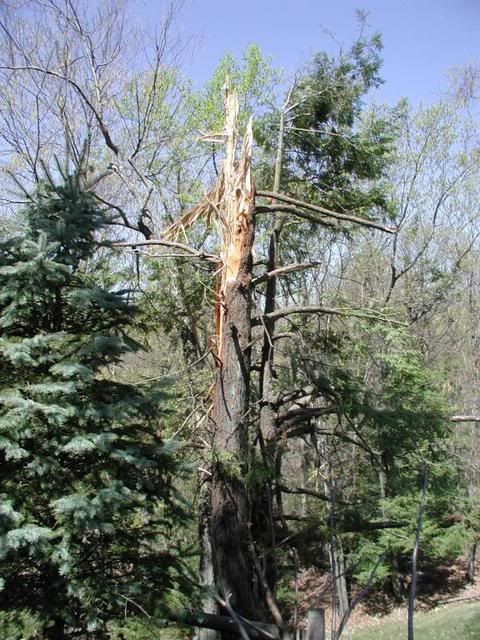
As the lightning flowed through the earth, it hit the bedrock and turned towards the direction of the house, notice the bedrock by the fence post
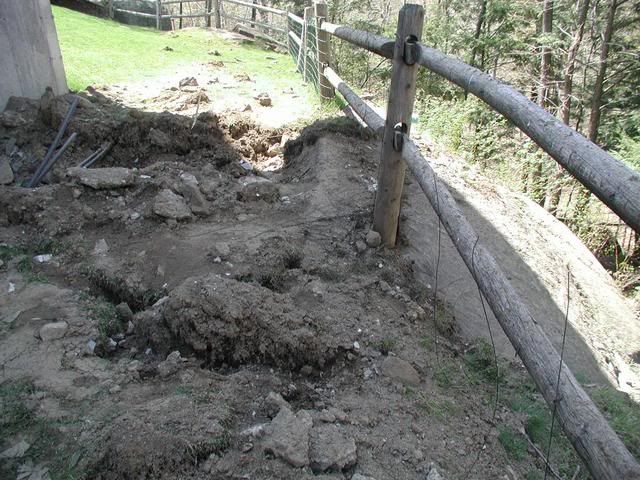
The lightning blew up the dirt around the bedrock, very cool, lots of collateral damage to the house as the dirt and rocks were flying
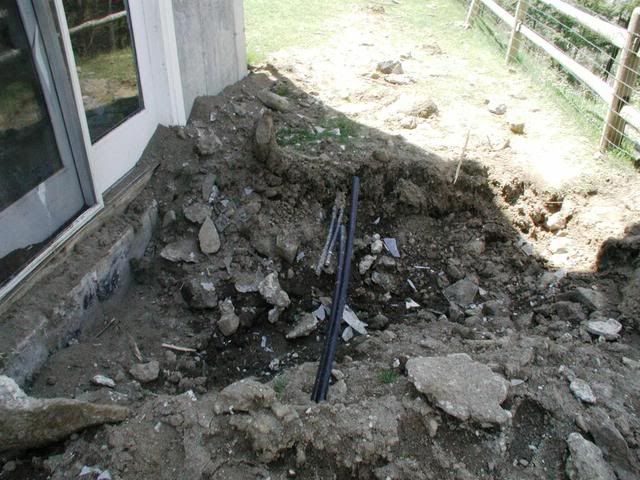
Here is the collateral damage
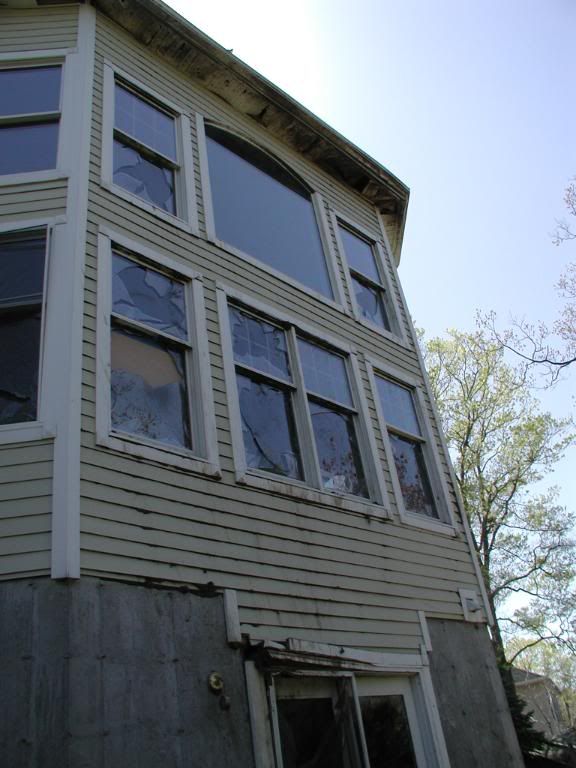
There was a ton of damage inside the house to the wiring, here the service was damaged as well
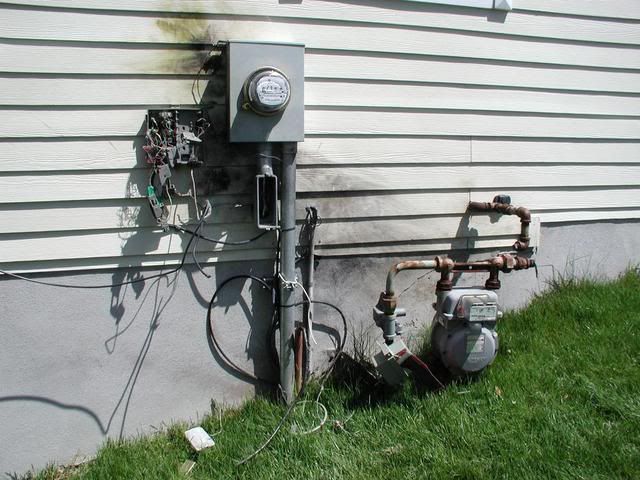
The lightning actually entered the house from underneath, via this lolly column
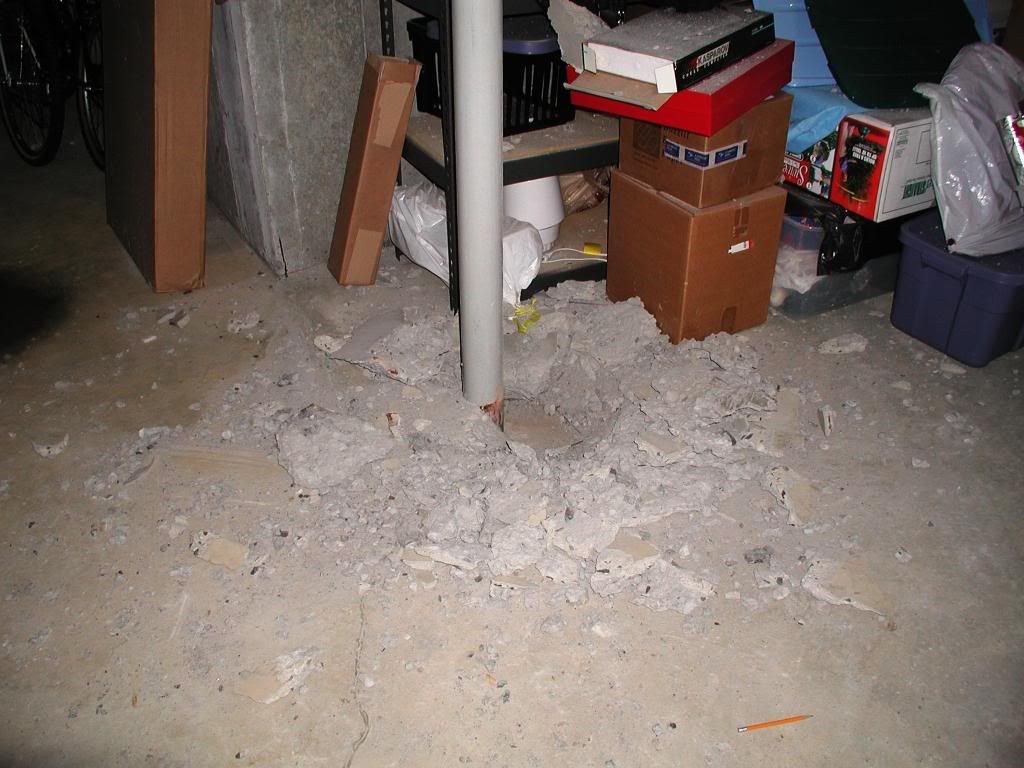
I witnessed the aftermath of a situation just like yours.
Here is the tree that was struck, 75 ft from the house

As the lightning flowed through the earth, it hit the bedrock and turned towards the direction of the house, notice the bedrock by the fence post

The lightning blew up the dirt around the bedrock, very cool, lots of collateral damage to the house as the dirt and rocks were flying

Here is the collateral damage

There was a ton of damage inside the house to the wiring, here the service was damaged as well

The lightning actually entered the house from underneath, via this lolly column

CopperTone
Senior Member
- Location
- MetroWest, MA
that is totally awesome
drbond24
Senior Member
- Location
- Barboursville, West Virginia
that is totally awesome
Unless it is your house, and then it sucks.
It ain't my house, though, so I 2nd: totally awesome!
bphgravity
Senior Member
- Location
- Florida
Great pictures Pierre. I am particularly interested in the last picture showing the concrete blown out. I have ben looking for this sort of evidence for quite some time.
Can you confirm that what is seen in the final picture is a direct result of the lightning strike and not tampered with at all by the owners or a cntractor?
Are you aware of and can you elaborate on the gounding electrode system present at the builing, namely is there is a concrete-encased electrode used?
Was there any damage to the gas piping system, also seen in one of the pictures?
Have you been able to research any meterological data to possibly indicate the type (+ / -) and magnitude of the lightning strike?
Was any one present during the strike that witnessed all the events that transpired, and was anyone hurt?
Thanks!
Can you confirm that what is seen in the final picture is a direct result of the lightning strike and not tampered with at all by the owners or a cntractor?
Are you aware of and can you elaborate on the gounding electrode system present at the builing, namely is there is a concrete-encased electrode used?
Was there any damage to the gas piping system, also seen in one of the pictures?
Have you been able to research any meterological data to possibly indicate the type (+ / -) and magnitude of the lightning strike?
Was any one present during the strike that witnessed all the events that transpired, and was anyone hurt?
Thanks!
Thanks for your responses, all. Very helpful. Is any of this testing described or standardized in a protocol somewhere? Our EE indicates his 250V test will comply with "InterNational Electrical Testing Association Standards," but I don't see a summary of these that addresses this 250V vs. 500 V testing. Megger book claims that their instruments/tests will not damage wiring - so a higher voltage test seems sensible - but our EE seems concerned the higher voltage will cause damage. Any thoughts or experiences on this issue? Feeling confused with these conflicting opinions from Megger book and our EE, and here in the Pacific Northwest, we have very little lightning damage and few regional resources for info. So I really appreciate your views and perspectives on my questions.
- Status
- Not open for further replies.

